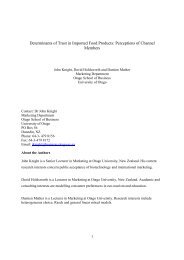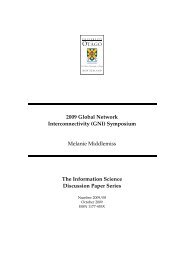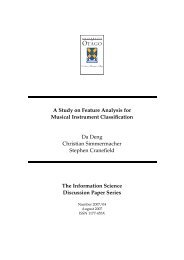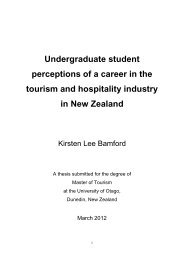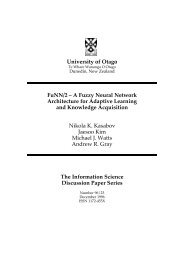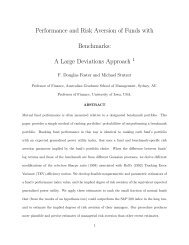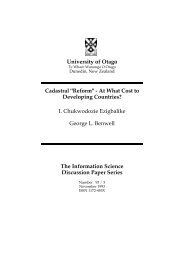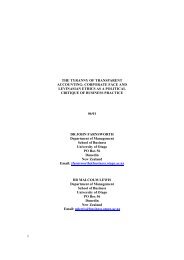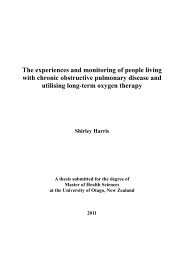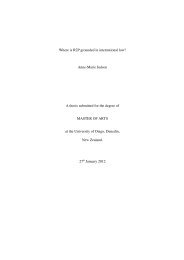Reframing perceptions of anthropomorphism in wildlife film and ...
Reframing perceptions of anthropomorphism in wildlife film and ...
Reframing perceptions of anthropomorphism in wildlife film and ...
You also want an ePaper? Increase the reach of your titles
YUMPU automatically turns print PDFs into web optimized ePapers that Google loves.
CHAPTER 2) DOCUMENTING NATURE: THE SUBJECTIVITY OF FILM<br />
‘A <strong>film</strong> about a jungle where noth<strong>in</strong>g happens is not really what you turned the<br />
television set on to see’<br />
2.1) Wilderness on <strong>film</strong>: Reality versus Enterta<strong>in</strong>ment<br />
- David Attenborough<br />
Our anthropomorphic tendencies <strong>in</strong>dicate that depictions <strong>of</strong> <strong>wildlife</strong> <strong>in</strong> <strong>film</strong> <strong>and</strong><br />
documentary cannot represent the reality <strong>of</strong> nature <strong>and</strong> <strong>in</strong>deed, it is difficult to f<strong>in</strong>d<br />
evidence that they ever have. The ‗Wilderness‘ is arguably a human construct, a<br />
concept <strong>of</strong> nature that is a product <strong>of</strong> a civilisation‘s particular cultural values (Cronan<br />
1995, K<strong>in</strong>g 1996, Mitman 1999, Bousé 2000, Horak 2006). With the onset <strong>of</strong><br />
<strong>in</strong>dustrialisation, many <strong>of</strong> our immediate connections with animals were lost. The<br />
majority <strong>of</strong> humans no longer directly <strong>in</strong>teract with animals through traditional hunt<strong>in</strong>g<br />
or subsistence farm<strong>in</strong>g <strong>and</strong> agriculture (Cronan 1995, Porter 2006). Once ‗tamed‘,<br />
nature became a nostalgic world represent<strong>in</strong>g the ―antidote to our human selves‖<br />
(Cronan 1995). Never is this more apparent than <strong>in</strong> <strong>wildlife</strong> <strong>film</strong>. Through the camera<br />
lens ‗real‘ nature is translated <strong>in</strong>to ‗reel‘ nature, a palatable excerpt <strong>of</strong> wild life based on<br />
the social <strong>and</strong> cultural beliefs <strong>of</strong> the time (Mitman 1999, Bousé 2000, Pierson 2005).<br />
Wildlife documentary has <strong>of</strong>ten been seen as a bridge between <strong>film</strong> <strong>and</strong> science (Apple<br />
<strong>and</strong> Apple 1993, K<strong>in</strong>g 1996, Bousé 2000) <strong>and</strong> as such has caused controversy because<br />
<strong>of</strong> the way the science has been manipulated for popular enterta<strong>in</strong>ment. This<br />
development is evident even <strong>in</strong> the first widely distributed <strong>wildlife</strong> documentary,<br />
Theodore Roosevelt‘s <strong>film</strong>ed safari expedition, Roosevelt <strong>in</strong> Africa produced <strong>in</strong> the<br />
early 1900‘s. The <strong>film</strong>, despite its much-lauded educational <strong>and</strong> moral value, was a<br />
disappo<strong>in</strong>tment to audiences because it lacked drama <strong>and</strong> excitement (Mitman 1995).<br />
John Burroughs highlighted the emerg<strong>in</strong>g problems <strong>of</strong> balanc<strong>in</strong>g fact <strong>and</strong> fiction <strong>in</strong> his<br />
1903 Atlantic Monthly article about ―nature fak<strong>in</strong>g‘, where he accused nature writers <strong>of</strong><br />
heighten<strong>in</strong>g moments <strong>of</strong> drama to make nature seem more excit<strong>in</strong>g (Hedgpeth 1993).<br />
Wildlife <strong>film</strong>makers, however, found that audiences craved drama over authenticity. To<br />
engage viewers <strong>and</strong> be a commercial commodity, nature had to be made <strong>in</strong>to melodrama<br />
(Mitman 1999, Bousé 2000).<br />
6




